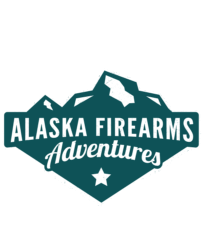Here at Alaska Firearms Adventures, safety is our number one priority. Whether you’re at the shooting range or in the backcountry, it’s important to follow these rules to keep yourself and everyone around you out of harm’s way.
But don’t worry, if you’ve never handled a gun before or need a refresher, we’ll go over all of the below and more in our safety course before your first Alaska Firearms Adventures package.
Keep the Muzzle Pointed in a Safe Direction
This is the most important and most basic safety rule. So, never point your gun at anything you don’t want to shoot--and this includes during loading or unloading. Remember, if your muzzle is in a safe direction, even in the event of an accidental discharge, there won’t be an injury.
Firearms Should Be Unloaded When Not in Use
When not in use, firearms and ammunition should be secured somewhere safe, separated from each other. Unload your gun as soon as you are finished and remember to never assume a gun is unloaded--you’ll want to check it for yourself.
Don’t Assume Your Gun’s Safety Will Work
The safety on your firearm is a mechanical device that can fail. Don’t touch the trigger until you are ready to shoot--including while loading or unloading.
Understand What Is Beyond Your Target
Never shoot unless you know exactly what you’re going to strike. Even a 22 short bullet can travel over a mile, so be sure you know how far your bullet will travel if it misses your intended target or ricochets.
Use the Right Ammunition
It’s your job to read and heed the warnings on the gun’s manual and on the ammunition boxes. If you incorrectly use ammunition, you can destroy your gun and cause serious injury.
If Your Gun Fails to Fire, Be Careful
Sometimes a cartridge doesn’t fire when the trigger is pulled. If this happens, remember rule one, carefully open the action, unload the gun, and dispose of the cartridge safely.
Wear Eye and Ear Protection
Shooting can damage hearing and sight. Wearing ear protection makes shooting more accurate and fun and wearing eye protection, even when disassembling and cleaning a gun, prevents springs, solvents, and more from hitting your eyes.
Check That Your Barrel Is Obstruction-Free Before Shooting
Before you load your gun, open the action and make sure the barrel is clear. Small things like mud or snow can cause increased pressure that can lead to injury. Also, if the noise or recoil as you fire doesn’t seem right, stop what you’re doing and recheck for an obstruction.
Don’t Modify Your Gun and Service It Regularly
Firearms are complex machines, designed by experts. Altering your gun can make it dangerous and voids warranties. Also, guns don’t last forever. Check with your gun’s manufacturer to find out when they recommended service.
Learn About Your Firearm
Not every gun is the same. The way you carry and handle your firearm will change due to its specific characteristics. Don’t handle a gun without learning about it, the safety recommendations for that gun, and the safety rules for gun handling in general.
It’s a good idea to work with an expert as you are learning these rules. Beginners need close observation. And remember: You shouldn’t be timid about gun safety. If you see anyone violating these rules or other best practices, it’s your responsibility to speak up.
You can read more about these rules and more at NSSF, the firearms industry's trade association.






